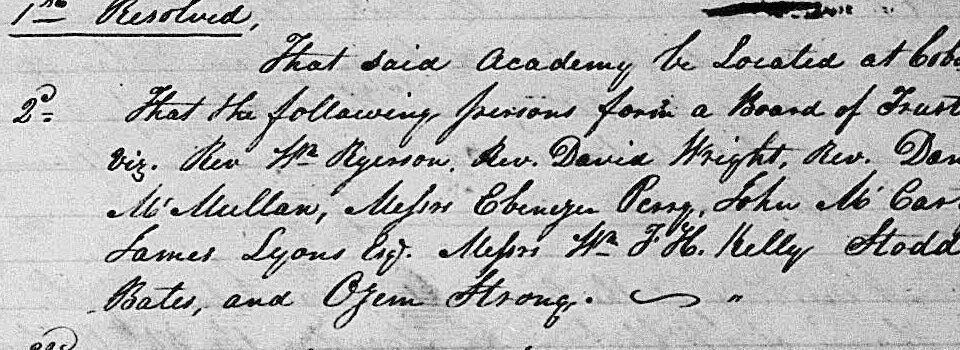Harold Morrey Smith fonds
Harold Morrey Smith fondsFonds number2061 Name of CreatorSmith, Harold Morrey Dates of Material 1916-1920 TitleHarold Morrey Smith fonds Source of title properTitle based on the contents of the fonds. Extent19 cm of textual records Administrative HistoryHarold Morrey Smith was born in Toronto in 1897. His father was employed by the Bank of Toronto. His mother, with whom Harold had a close relationship, was apparently involved in the activities and social life of Trinity Methodist Church. His only sibling, a younger brother named Waldo, was later to become a minister of The United Church of Canada and a professor of church history. Harold attended the University of Toronto Schools before matriculating at Victoria College in the University of Toronto in 1914. During his first two years at Vic, he distinguished himself as a gifted student who not only won academic scholarships and prizes but also participated in activities such as the "Bob" and was elected "Senior Stick" (in absentia) by his classmates. Scope and ContentFonds contains letters sent by Harold Morrey Smith to his family from military training camps in Ottawa, England and France during the period 29 June 1916 to 22 May 1919. There are some additional items such as a procedure manual for Signal Training (1918), dispersal certificate (1919 May 24), a small encased picture of Jesus Christ, and a student essay written for a Modern History course. Note(s)Physical ConditionThe paper of some letters is becoming brittle and fragile, especially around the edges. Use caution when reviewing. Immediate Source of AcquisitionThis material was donated to the Victoria University Archives by Mr. Smith's daughters, Margaret Veall and Carolyn Stafford, in the autumn of 1989 and winter of 1990. Availability of Other FormatsSome letters are available digitally. See file level for details and contact the Archivist for access. Finding AidsPhotograph album is described in the photograph database - search for accession number 1993.065. Some photos have been digitized: http://archival-photos.vicu.utoronto.ca/ General NotesSee also a photo of H.M. Smith in uniform under accession 1989.141, by searching our Photograph Database. General NotesFor other personal records donated by students, see Collection 2190 - Victoria University (Toronto, Ont.). Student Collection CategoryStudents / Alumni Personal Papers ConservationDecember 2018 - Many letters have been sleeved in plastic to protect them. Some letters are sleeved by individual pages, others have all the pages in one sleeve. Box/File List
|
 Ask Us
Ask Us
